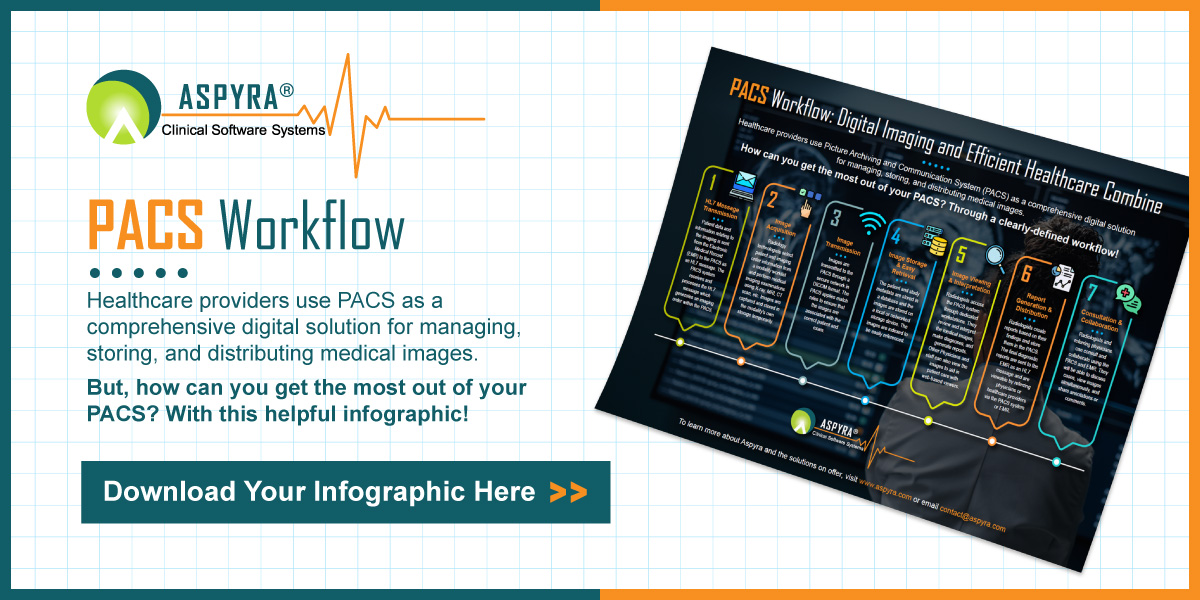What is PACS Radiology and What are the Benefits?

Technologies like PACS radiology imaging have brought undeniable impacts and benefits to the healthcare field and even the environment: no more chemicals to develop x-ray films, no more pasted old x-rays, which also means fewer costs and more savings. PACS radiology imaging has become a game changer for healthcare organizations and has become an essential piece of technology that radiologists and physicians can’t live without.
What is PACS Radiology Imaging?
PACS—an acronym for Picture Archiving and Communication System—is what radiologists, specialists, and other medical doctors use to access images and other data to help them diagnose issues. Simply put, this system electronically and digitally stores images and reports instead of using the “old methods” involved in medical imaging such as manually filling, retrieving, and transporting film jackets. This provides an economical solution for healthcare organizations.
Radiology departments usually have to store and share X-ray images and patient reports. PACS uses two universal formats called DICOM (Digital Image and Communication in Medicine) and HL7 (Health Level 7), which enables PACS and other medical imaging systems to connect and pass data to other systems and facilities. This allows radiology departments to simplify the process and organize their data. For example, if a patient has undergone several radiology scans at different locations, multiple radiologists and physicians need access. PACS makes collaboration easier because it allows healthcare providers to transfer images while still being able to maintain the original quality of the image and remain HIPAA compliant. PACS can also handle scanned documents and medical reports with PDF files.
PACS also handles multiple types of medical images, the most common are:
- Ultrasound (US)
- Magnetic Resonance Imaging (MRI)
- Nuclear Medicine Imaging (NM)
- Computed Tomography (CT)
- Positron Emission Tomography (PET)
- Endoscopy (ES)
- Mammograms (MG)
- Digital radiography (DR)
What are the Benefits of PACS?
Benefits of PACS for Medical Professionals
Radiology departments can rely on PACS because it:
- Allows easy accessibility and integration: PACS integrates with other medical automation services. This allows instant access to images and reports, no matter where or when they took place. Everything can be done remotely, so an image can be viewed, assessed, and reported offsite. There is no need to store different copies for each department.
- Replace hard copies: PACS replaces the conventional methods of managing medical documents and reports, making the process more convenient, saving time and money. This also eliminates the need for redundant scans.
- Ease of use: PACS offers an enhanced visualization of images allowing for image manipulation to better interpret and analyze the image. Other benefits include:
- improved radiology workflow management
- image optimization
- advanced image processing techniques
- improved diagnoses with high-quality imaging
- improved communication between doctors
- efficient reporting
Benefits of PACS for Patients
There are also several benefits for patients
- minimized need to retake images, and less exposure to radiation
- faster and more accurate diagnosing
- faster treatments
PACS Radiology System: An Enterprise Imaging Solution
PACS allows healthcare professionals to diagnose, consult, and maximize the quality of care and efficiency. With this simple change to your healthcare organization’s workflow, you can increase productivity and enjoy long-term advantages. That’s why radiology departments and other medical departments rely on PACS. To learn more about the system, contact us today!

